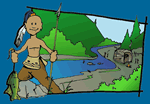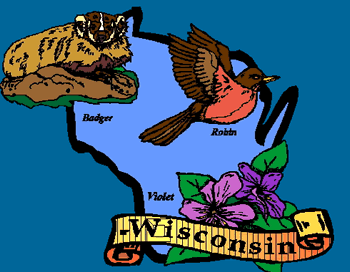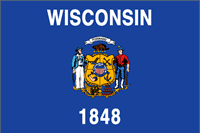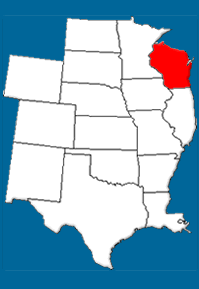 First Inhabitants:
As long ago as 10,000 years ago, Paleo-Indians came through Wisconsin hunting wooly mammoth, mastodon, and bison. After the retreat of the glaciers, the climate improved and people began to live in caves, along rivers, and around lakes. They hunted smaller animals like deer and elk, and harvested wild plants, nuts, and acorns. During the Woodland Period, around 3,000 years ago, people began to live together in villages, and use bows and arrows to hunt. They built burial mounds for their dead.
By the 17th century, the people living in Wisconsin belonged to broad groups of Indians, classified by language type. The Menominee, the Kickapoo and the Miami tribes spoke Algonquian, and the Winnebago, Dakota and Iowa tribes spoke Sioux. Later in the century, other groups entered Wisconsin including the Fox, Sac, Potawatomi and Ojibewa (Chippewa).
When the first Europeans came into the area, they brought important opportunities for trade, particularly in furs like beaver. They also brought diseases for which the native people did not have natural immunities. Many of the native people died from smallpox, measles and mumps. In fact, disease is likely to have killed many more Native Americans than armed conflicts did. By 1825, the US government and Indian representatives met in Prairie Du Chien and signed a treaty establishing the boundaries amongst various tribes and opening the way for further non-Indian settlement. However, this treaty did not prevent further conflict between Native Americans and European settlers looking for land. The native people were eventually forced off their land to land further west or to reservations. |









